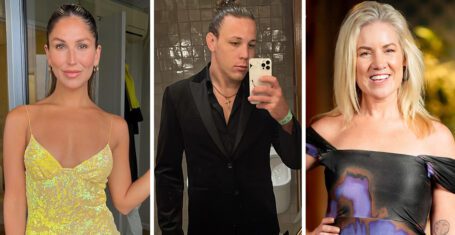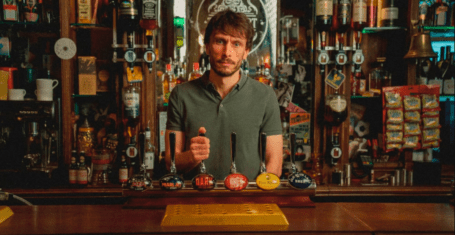
When Schubert Met Sodium
Cool chemist SIMON PAGE finds out how we can overcome the arts/science divide.
Which is greater: The Moon Landing or the Sistine Chapel? Which required more effort? More genius? More creativity? What’s more important: science or art?
I should declare a conflict of interest straight away. I’m a scientist. A proper, safety-specs-on-head, RSC (chemistry, not Shakespeare) card-carrying scientist. I’ve got a copy of the periodic table in my wallet – it’s as useful as any map. I can draw all of the natural amino acids from memory. I derive equations in my spare time on the backs of receipts.
I say this not to impress you, but to elicit a response. You see, scientists and artists have disparate reactions to this kind of information.Fellow scientists will nod and chuckle and ask where I got a wallet-sized periodic table (the 1a prep room in the Department of Chemistry, by the way). Artists simply won’t care.
Artists put up with science. They watch with mild interest as a news anchor says that we’ve discovered a new species of ant, and feel a sense of assurance when they read that we’ve nearly cured a disease or so. But, artists never really embrace science. Not enough to pick up a big textbook. Or to work out why we only ever see one side of the Moon. Or to do a tricky sum in their head as opposed to on their phone. (Ah, who am I kidding? We do this as well.)
To artists, science is boring. And impenetrable. Artists struggle to care about science unless it stops their phone battery running out after a day and a half. Which we can’t do, by the way. Turns out, there’s not enough lithium in the world.
Don’t get me wrong: I am under no delusion that this apathy is one sided. The same is almost certainly true of scientists. They probably never listen to Schubert, or study dusty paintings, or think about Proust. The truth is, and I speak from first-hand experience, scientists don’t really know much about art. The main reason we poke fun at artistic subjects is because we simply don’t understand them. It’s not that we actually think they’re pointless, or that we don’t care – we just don’t get it.
So, artists don’t care about science, and scientists don’t know about art. Scientists make fun of artists, and artists are (justifiably) offended.
What can be done about this? Well, frankly, there’s only one thing for it, but we’re not going to like it. We all need to be better informed. We need to lecture swap. Choose your side on the science-art divide, and then go to a lecture on the opposite side. Oh yes. Very “Big Society”, I know.
Which is why, on a cold Monday, I forsook my glassware and my ruthenium and my nice, orderly, always-true facts, and sat down in an Art History lecture titled: Music and Society in Handel’s London.
The first thing to strike me was that I was surrounded by berets. I mean, seriously? We thought that was just a cliché. Apparently not.
And I sat. And I sat. And I nodded. And I counted berets, and I checked my watch. And an hour down the line, I was surprised to find that I had actually learnt a little bit about Handel. And, for some reason, this thrilled me. Everyone else looked mildly bored, but I was thrilled. It felt like forbidden fruit. Artsy knowledge in a scientist’s brain. I overcame my fear, and actually learnt something that wasn’t science. What’s more, I enjoyed it. Mr Gradgrind never knew what he was missing.
So, which is greater: the moon landing or the Sistine Chapel? Of course, this is impossible to answer. Or rather, even if one is a greater accomplishment, it doesn’t matter. Both are too massive to be ignored. And we all need to know about both. So let’s lecture swap and learn about each other’s subjects. Who knows, maybe one day we’ll build a Sistine Chapel on the moon.
Do you think there is such a thing as a soft subject at Cambridge?customer surveys









































